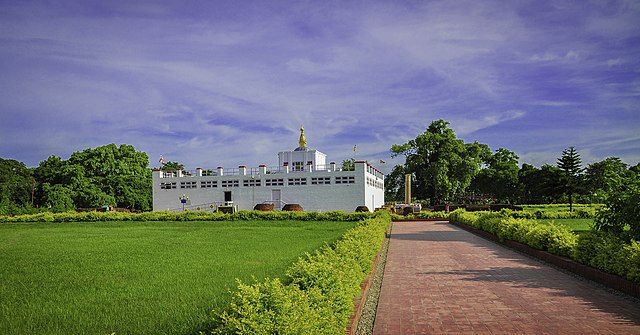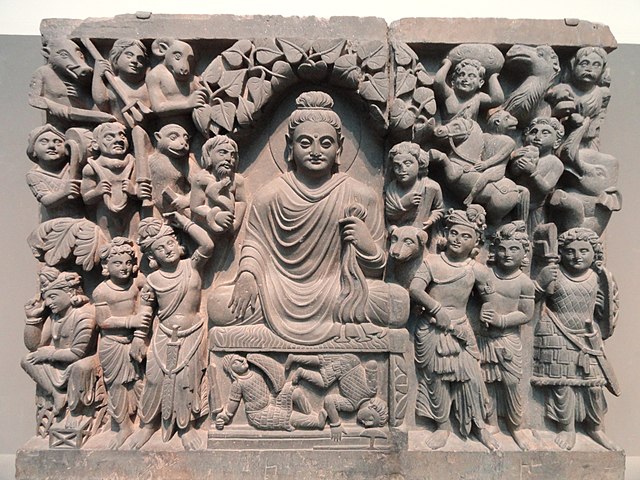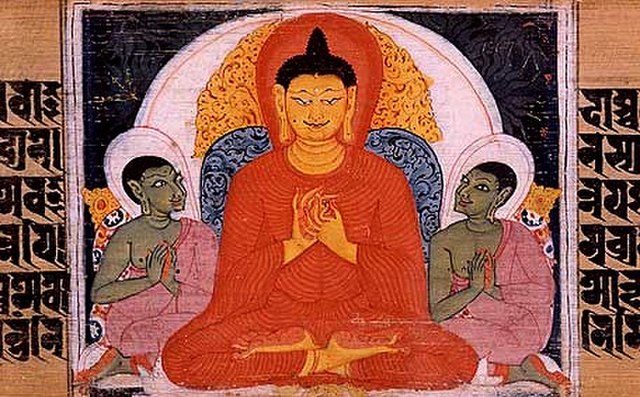In Buddhism, refuge or taking refuge refers to a religious practice, which often includes a prayer or recitation performed at the beginning of the day or of a practice session. Since the period of Early Buddhism all Theravada and mainstream Mahayana schools only take refuge in the Three Jewels, which are the Buddha, the Dharma and the Sangha.
Veneration of the Three Jewels, Chorasan, Gandhara, 2nd century AD, schist – Ethnological Museum of Berlin
Shakyamuni Buddha and his followers, holding begging bowls, receive offerings. In the Pāli Canon, the Buddhist monk is given a significant role in promoting and upholding faith among laypeople.
A Mahayana illustration of 35 Buddhas
Gautama Buddha delivering his first sermon in the deer park at Sarnath, Varanasi with his right hand turning the Dharmachakra, resting on the Triratna symbol flanked on either side by a deer. Statue on display at the Chhatrapati Shivaji Maharaj Vastu Sangrahalaya in Mumbai.
Buddhism, also known as Buddha Dharma and Dharmavinaya, is an Indian religion and philosophical tradition based on teachings attributed to the Buddha. It is the world's fourth-largest religion, with over 520 million followers, known as Buddhists, who comprise seven percent of the global population. Buddhism originated in the eastern Gangetic plain as a śramaṇa–movement in the 5th century BCE, and gradually spread throughout much of Asia via the Silk Road.
Mayadevi Temple marking the Buddha's birthplace in Lumbini
Enlightenment of Buddha, Kushan dynasty, late 2nd to early 3rd century CE, Gandhara
The Buddha teaching the Four Noble Truths. Sanskrit manuscript. Nalanda, Bihar, India
Traditional Tibetan Buddhist Thangka depicting the Wheel of Life with its six realms








